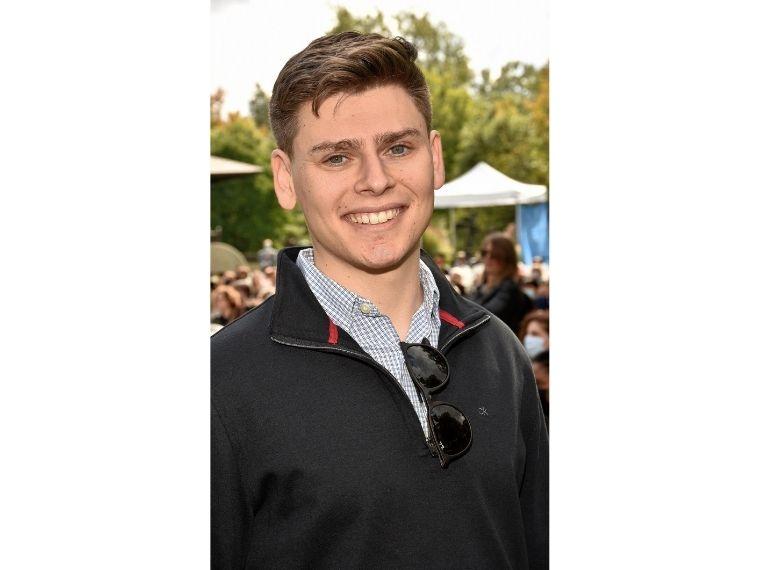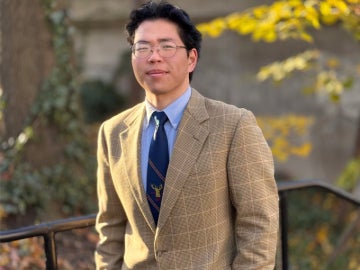The Pursuit of Research and Understanding How the Brain Works
March 15, 2022
Ava Miller ’25

Photo credit: Courtesy of David Shostak
David Shostak ’20, a native of San Francisco, played four years on the varsity soccer team and graduated with a major in biology, a concentration in cognitive science, and a minor in environmental science. For the past two years, he has worked at a neurobiology lab at the National Institutes of Health (NIH) in Bethesda, Maryland. In fall 2022, Shostak will begin working toward a PhD in neuroscience at the University of California San Francisco.
Read more about Shostak in this After Oberlin Q&A.
What was it like balancing Varsity Soccer and being a STEM major?
I’m not going to sugar coat this. Playing varsity sports and majoring in STEM at Oberlin was hard. On one hand, it was imperative for my mental health to exercise and have fun, which Oberlin soccer provided daily in addition to an amazing community of friends. On the other hand, my commitment to time intensive science classes, which included weekly labs, while having to set aside time for practices and games, made both academics and sports more difficult.
Did the difficulties of balancing the two pay off after graduation?
Free time becomes sparse, but it ultimately makes you a more efficient worker, which has definitely paid dividends in life beyond college.
How did Oberlin’s neuroscience department impact your personal interests?
Taking neuroscience classes at Oberlin really sparked in me a fascination with the brain. In addition to what I feel is an innate interest in how we are able to think (that I believe most people have), the professors at Oberlin displayed a contagious excitement during every class. Their excitement wasn’t just about what we know and what they were teaching, but also with how much we have yet to uncover.
Did you participate in research with any professors at Oberlin?
In spring 2020, I worked with Franne Kamhi, visiting assistant professor of neuroscience, studying dopaminergic cell bodies in unmated versus mated queen ants. Past papers suggest that dopamine is essential for suppressing reproduction in worker ants, allowing the queen to be the sole individual responsible for laying eggs.With that in mind, I sought to understand whether unmated queens (alates) and previously mated queens contained different numbers of dopaminergic cell bodies. If dopamine does repress reproduction, we hypothesized that alates would have a higher number of dopaminergic cell bodies to prevent fertility. Unfortunately, when the college went to remote classes in March 2020 due to COVID-19, I was unable to continue collecting data to finish my project. However, it was still an amazing opportunity to work side-by-side with a professor.
How did you land a position at NIH?
The NIH has a big "post-bac" (post-baccalaureate) program where you can apply to work in labs after graduating college to gain experience before going to graduate school. Since I graduated in 2020 during the beginning of the pandemic, there weren't a ton of jobs available for recent-grads, so I really lucked out. I applied to a database, and labs interested in me reached out via email, and I ultimately chose the Wray lab because of their emphasis on mentorship.
What type of research do you work on at NIH?
The lab I work in is a developmental neurobiology lab that studies how the brain controls reproductive function. There is a set of neurons called Gonadotropin Releasing Hormone (GnRH) Neurons that help regulate fertility, puberty, and ovulation. In my research I use these GnRH cells (in vitro), and mice (in vivo), to conduct experiments that look at what dictates the firing of these cells, and how issues with reproduction and puberty that arise may be related to malfunctioning of these neurons. Through my independent project, which will hopefully be published this summer as my first publication, I have discovered a novel mechanism whereby acetylcholine controls GnRH cell firing through both excitatory and inhibitory receptors, which could shed light on how mutations to the cholinergic system may lead to problems with fertility.
What are your plans regarding research?
The unknowns of the human mind, more metaphysically, and the human brain, more biologically, are ultimately what spurred me to pursue research. I have found an addictive drive that pushes me to answer questions no one has ever answered before. I believe all people have this drive, but what sets us on individual paths are which questions we are passionate about pursuing. For me, those questions have always been related to cellular mechanisms of neurologic disease pathology such as, how do diseases of the brain arise, and how can we treat them? Moving forward I am excited to dive even deeper into studying diseases of the brain, particularly neurodegeneration, in my PhD starting in fall 2022.
Where do you plan to pursue your PhD?
Next year I'll be pursuing my PhD in neuroscience at the University of California San Francisco. I'm from San Francisco and have worked in a few labs there, so it was my first choice from the start. I will hopefully be researching mechanisms of neuroinflammation, and how proinflammatory cells in the brain transition from helpful to harmful as we age.
You may also like…
Learning by Teaching: Oberlin Students Share Global Music with Young Learners
College and Conservatory students in PACE 103 prepare local children for an immersive community concert at Oberlin.
Nuiko Wadden ’02 Joins Oberlin Conservatory Faculty as Assistant Professor of Harp
The versatile musician brings extensive opera, orchestral, and contemporary music experience to her role
Leo Hidy ’23 Earns 2026 Marshall Scholarship
Leo Hidy ’23, a comparative American studies major who also studied business and economics while at Oberlin, has received a 2026 Marshall Scholarship that will fund two years of graduate study in the UK.


